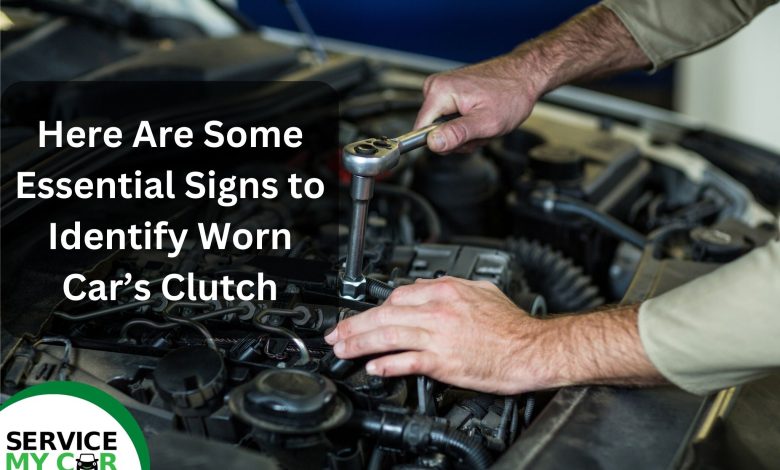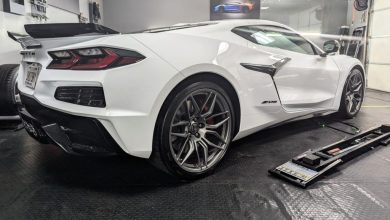Here Are Some Essential Signs to Identify Worn Car’s Clutch

The clutch assembly does all the important work of managing power transfer between the engine and transmission. When you press the clutch pedal down, the engine withdraws, sending power to the transmission and further down the wheels. On the other hand, the engine gets engaged again once you release the pedal.
What makes the clutch necessary for a vehicle?
Guess! A vehicle without any clutch has to establish direct contact with the transmission. Every time you turn over the engine, there is direct power transfer. Each time you turn your car’s key, the wheels would have turned.
Particularly, the starter motor would have been pushed harder to turn the engine. This does not seem feasible, as the starter would have sustained damage just after a few attempts. Similarly, nothing could spare the gears from damage, as there would certainly be some grinding and friction in between the gears each time you changed gears. With all these problems, there could not be a smooth ride. This is all possible with the virtue of clutch, or more specifically clutch assembly.
However, a clutch part of a vehicle is quite a robust part, as it does run for more than hundreds of thousands of kilometres without a replacement. But, it could ask you to make a change in advance, however, it is up to you how you interpret those signs. Here, we bring you some specific signs to get the idea of a worn clutch assembly.
Gear shifting has not been quite easy
A deteriorating clutch assembly usually starts to offer some sort of trouble-shifting gears. Even if you press the clutch entirely, the gears do not change as efficiently.
Shifting the lever may give you a vibrating experience, but there would be no proper shifting of gears without putting in considerable effort. However, the problem might be a particular part inside the assembly, such as a fork. But a professional inspection would be better to get the proper insight about the issue. Get Service my car expert to work on these complex issues.
Emergence of an annoying sound while clutching is in action
A worn clutch assembly cannot work as efficiently as an intact one. There would always be some sort of annoying noise, especially something grinding under the hood every time you press the clutch pedal.
Usually, it happens due to bad bearings. However, replacing the bearings is not a very tough task and not even expensive. However, any ignorance has the possibility of turning into something big and even more expensive.
Additionally, be sure to keep an eye out for any burning or offensive odours coming from the engine. This may be the result of excessive clutch-riding driving, which prevents the clutch from cooling down and increases clutch wear and tear.
Instances of clutch slippage more frequently
Odd things happen when a clutch has gone beyond its useful life or has worn enough to no longer do what it was expected to do. A clutch should properly engage in a pressing down situation and should disengage properly when you let it go.
There would be unsteady RPM fluctuation, especially due to clutch slippage. However, such a problem is more common while pushing to overtake and towing a heavy load. Vehicles that usually run more into traffic and hilly areas often develop clutch problems prematurely.
While slipping is not very good for driving, it also produces overheating and makes the clutch go bad more rapidly. In case you wish to confirm a slippage, it requires you to start your car and try to change the gear into a higher slot. There would be two possibilities: first, the car would stall, and second, the RPM would increase horribly.
A sudden increase in the RPM gives a good idea to go for a car clutch replacement at Service My Car at the earliest possible date.
Uninhibited vibrations during the engagement and disengagement of the clutch
While clutches facilitate a smooth transition of power and change of gears, a sudden vibration is not a good sign of clutch health. A vibrating clutch, during the clutch engagement, hints at wear and tear.
However, it could be due to other underlying reasons, such as the presence of oil or lubrication at the top of the clutch plate. Sludge does have a bad effect on the clutch’s performance. However, the vibration might end after some time. If it does not go away, the clutch pressure plate is worn and not effectively pressing the clutch friction plate against the engine flywheel.
Besides, the sudden shakes are usually the result of an improper engine mount or incorrect establishment of the gearbox. In case you own a peugeot car and wondering, how to find the nearest peugeot specialist to repair a peugeot gearbox? Open google, type peugeot garage near me and you will find Service My Car on the top to get the peugeot gearbox services in the town.
When should you consider a clutch replacement?
Usually, a clutch replacement is due when you notice any of the above-mentioned signs. However, a well-maintained car that also drives under normal conditions, such as less traffic, no towing, and a rare visit to a hilly area, does not need a clutch replacement before at least 100,000 kilometres.
However, if you have driven your car considerably or have started noticing some signs of wear and tear, Get it checked at Service My Car and be assured about the genuine health of such a critical component.
Just book a car service or order a car repair quote online on our website or app.




